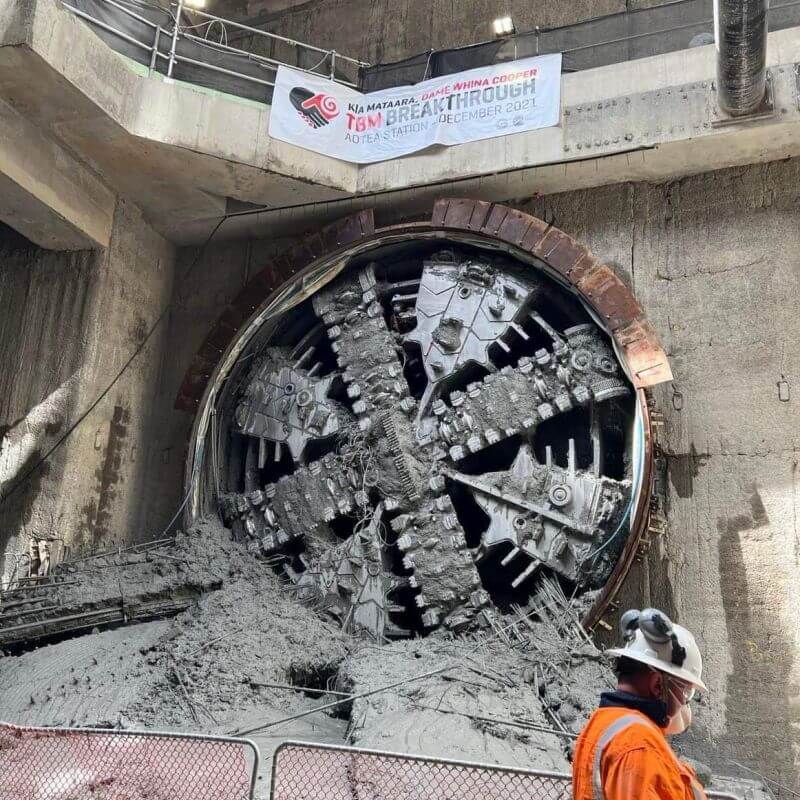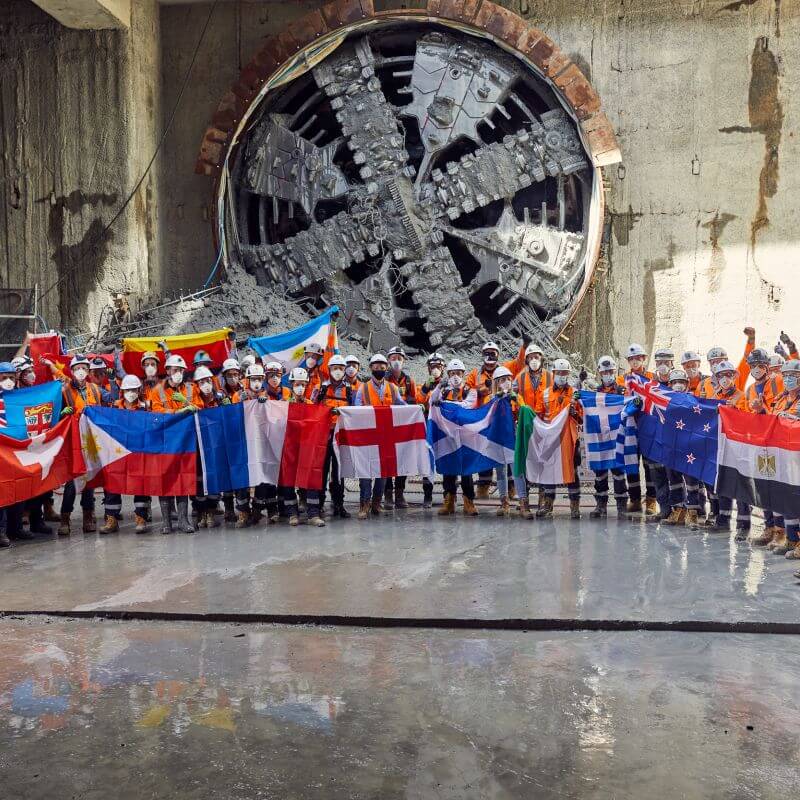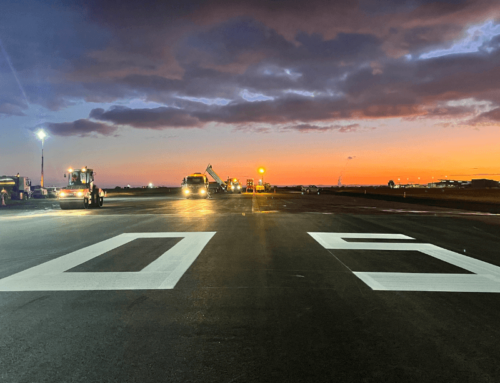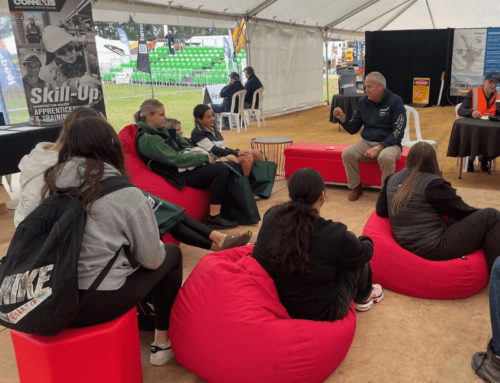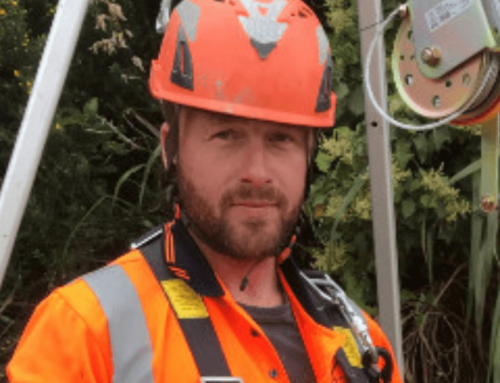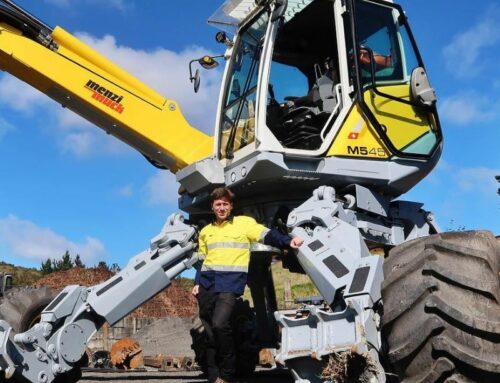Deep below central Auckland, a giant machine will soon resume chomping its way through the sandstone soil to create a key piece of transport infrastructure for the city’s residents.
Like a giant sandworm straight out of sci-fi novel Dune, the 130-metre-long Tunnel Boring Machine burrowing through the ground on the City Rail Link project is out-of-this-world in terms of its size and capabilities.
Not only can it excavate up to 1,500 tonnes of soil and travel up to 32 metres a day, but it also places pre-cast concrete tunnel sections as it goes – dramatically increasing the speed at which the $4.4 billion project can be completed.
Named Dame Whina Cooper, after the ground-breaking Māori rights activist of the same name, the machine has already created the first of two 1.6-kilometre-long caverns that will form a twin-tunnel underground rail link from Mount Eden to Aotea. After being dismantled, transported, re-assembled and put through testing, the machine will soon start work on the second tunnel – parallel to the first and up to 42 metres below ground.
But unlike the sandworms on Frank Herbert’s fictional world of Arrakis, getting Auckland’s Tunnel Boring Machine moving requires human assistance.
The 130-tonne monster is operated by 12 specialised on-board crew members and dozens of support staff who keep it running safely. From the pilot operating the machine, to the shift engineers monitoring on-board systems, multi-service vehicle drivers transporting equipment back and forth and the support crew above and below ground, the whole team must work as one.
“It’s the ultimate team sport”, says Derek Whelan, Construction Manager on the Tunnel Boring Machine crew. Currently working for Vinci as part of the Link Alliance, he has served on tunnel boring machines for 13 years in the UK and New Zealand.
“Everything each team member does is linked and critical to the project’s success. I’d compare the machine to an underground factory.”
Derek has been involved since early on in the City Rail Link project, and while it has been plain sailing so far, he admits to a few sleepless nights in sections where the tunnels pass close – in engineering terms – to the foundations of buildings above ground in Auckland’s CBD.
Precision is critical, but Derek highly experienced having worked on a variety of other major subterranean tunnelling projects, including in London where he was involved in a tunnel at Heathrow and two other major underground rail lines from 2009 to 2017.
He says there are similarities between Auckland’s City Rail Link and the London Underground project, but also many differences. For example, mining through the sandstone soil beneath Auckland requires a specialised cutterhead. The team has a full report on the route’s underground geology, identifying precise air pressure balance settings required for the cutterhead for every 20-metre section they travel through.
Another member of the crew is Shift Engineer Taio Pou. He spends most of his days working on board the machine, looking after its guidance systems, monitoring soil conditions and the hydraulic thrust jacks that keep it moving, and ensuring the quality of everything they do.
It’s a unique role, and one performed without the opportunity to refer to landmarks or any of the usual navigational reference points you might get in an above-ground machine. He and the team must follow the route to within 5 cm of the carefully modelled plan; an amazing feat when you consider the Tunnel Boring Machine is longer than a football field.
“It’s like a new world down there. We are underground for 12-hour shifts and you don’t see the sun like your mates do, but it’s the people who make it. You create a great family dynamic – that’s important because you can be down there with the team for seven days straight, seeing them more than you see your girlfriend,” he jokes.
Before joining the Tunnel Boring Machine crew in November last year, Taio worked on the City Rail Link utilities team doing major stormwater infrastructure. He enjoyed water infrastructure work but says he would be keen to keep on tunnelling after the City Rail Link project is finished.
“You don’t see a TBM all the time … I’m pretty keen to stay on with Vinci and do tunnelling work all over the world.”
Another recent addition to the team is Jack Reidy, who came on board in late December as one of 20 interns supporting the project through the most recent Link Alliance summer internship programme. He is in the fourth year of a mechanical engineering degree with the University of Auckland and has landed a role many of his fellow students would be envious of.
“The whole thing is just awesome … there are so many moving parts. The team has been very good, there are no dumb questions and I can always go to them for help.”
His daily duties include working in the mechanical division of the Tunnel Boring Machine team to provide support and to help coordinate teams and tasks essential to the project.
While he never expected to be working on a Tunnel Boring Machine when he was growing up, Jack says engineering has long been a passion. Both his parents were in the Royal New Zealand Air Force and he grew up on Ōhakea Air Force Base, often sneaking away to watch mechanics working on air craft in the hangars.
“It was always a toss-up for me between engineering or being a pilot. I ended up going for engineering, which was a good thing because as a type one diabetic becoming a pilot was going to be a bit more difficult.”
City Rail Link Chief Executive Dr Sean Sweeney says it’s people like Derek, Taio, Jack and the whole team of 2,000 working across the City Rail Link project who will ultimately make it a success.
He says there is a “massive shortage” of infrastructure workers in New Zealand, which creates opportunities for people who want to make a name for themselves and progress a career quickly.
There are many ways to get a start within the industry but work on a major infrastructure project should be near the top of any career seekers’ list, he says.
“Big projects are like battleships, they have enormous power to do big things. They have the infrastructure to train you well, provide meaningful work with the right equipment, and mobilise people in a safe environment with some of the biggest companies in the world.”
Six major New Zealand and overseas companies are part of the Link Alliance delivering the project alongside City Rail Link Ltd.
The City Rail Link project is often hiring and has also implemented a range of initiatives to help youth, particularly Māori and Pacific Peoples, make the step into infrastructure, including the Progressive Employment Programme. The programme has brought on 24 young people since it began, buddying them up with experienced team members to help them learn the ropes.
“We have a view that there are kids in New Zealand who are missing out and the internship programme is just one small way we can contribute.”
Sean’s advice to anyone considering the industry is to go for it, particularly if they aren’t afraid of hard work, are resilient, have good people skills, and come with an optimistic mindset focused on solutions rather than problems.
“I’m sitting at the top of the largest infrastructure project in New Zealand and my message is that you can have a fantastic opportunity in infrastructure if you want it. The industry is a meritocracy … if you work hard, you will be rewarded, and it can take you around the world. The shortage of infrastructure workers is a global issue, not just in New Zealand.”
Video: How the Dame Whina Cooper Tunnel Boring Machine Works
The path to becoming a Tunnel Boring Machine (TBM) worker on the City Rail Link
- Get practical: be a team player, have a good attitude towards work, be adaptable – there are lots of different tasks TBM operators are required to do.
- What to study: many mechanics or electricians get roles in the TBM team.
- How to get in: be available and put your hand up for roles in any tunnelling team. New Zealand tunnelling career opportunities are relatively small compared to job markets overseas but New Zealand tunnelling team members are in demand.
- Where to look: check out the Link Alliance vacancies page for tunnelling roles.

